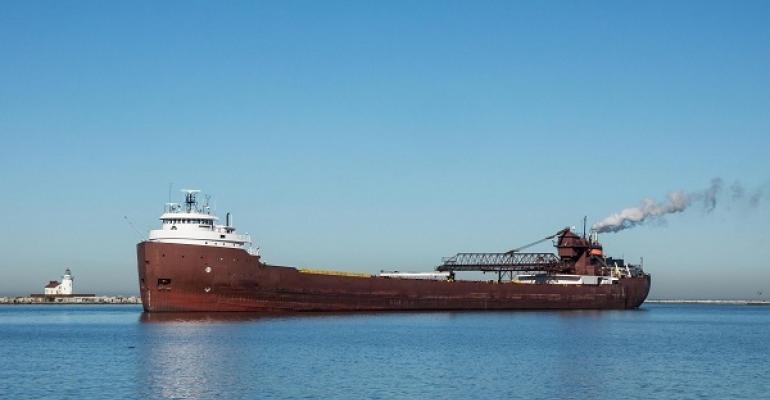GAO is a consultancy within the US Congress, performing economic analyses and then reporting back to legislators who must authorize spending and then allocate money.
The report was initially requested by Congressman Bill Shuster, a Republican from Pennsylvania, who has chaired the House Committee on Transportation and Infrastructure, along with Senator Jim Inhofe, Republican from Oklahoma, who serves on the US Senate’s Committee on Commerce, Science, and Transportation.
The report notes: “The tons of cargo moved by domestic Great Lakes and St. Lawrence Seaway traffic have declined since 1980—by 32 and 48%, respectively, according to US Army Corps of Engineers (Army Corps) and Saint Lawrence Seaway Development Corporation (US Seaway Corporation) data.”
Causes noted were a shift in the US heartland away from manufacturing- which was the traditional driver of demand for movements of iron ore and coal in bulk. Deteriorating infrastructure is also a big concern. A major chokepoint on the Lakes, the Soo Locks (in Sault Ste. Marie, Michigan- linking Lake Superior with points to the east) has been identified, in a 2015 report, by the Department of Homeland Security, as vital to national security.
Read the Department of Homeland Security report in full
The Lakes and Seaway offer management challenges, in that the waterways are maintained by governmental entities, yet it is commercial businesses, subject to economic trends, that actually determine the cargo flows. One description of issues facing the US Seaway Corporation illustrates this challenge vividly, with the report writers saying: “Without a formal assessment of risks, the US Seaway Corporation lacks information on the cumulative effect of the challenges faced by users of the system, limiting its ability to inform its future actions to help address those challenges.” With such issues in mind, the GAO recommendations center on creating, “a process to identify, analyze, and monitor risks to the system's use to inform future actions”.
Constraints facing users of the locks were also paramount, with a recommendation that, “the Army Corps develop and adopt goals and measures to assess the performance of the Soo Locks and assess of asset renewal outcomes.”
There is still a long way to go in maintaining locks in the region. A study done in 2007 identified dozens of needed infrastructure renewal projects. Data in the just released GAO report shows that the Army Corp has finished 18 projects, worth approximately $53m to date, and has about $257m in remaining and ongoing work through 2035. The US Seaway Corporation has completed 16 projects totaling $45m with roughly $144m in work still to be done through 2023.
The GAO analysts who prepared the report talked to numerous industry participants and were able to identify some positive trends possibly emerging. Interviews with “stakeholders” suggested possible brightspots in project cargoes (including wind turbine blades), containers, and the cruise business.

The report went on to identify issues facing these “emerging” trades; the winter closure, typically for three- four months during December – March, impedes regular movements of the containers and project cargoes. There is a bit of “chicken and egg” here; the GAO identified lack of infrastructure in ports to handle new cargo types- the ports suggested that their ability to raise finance was impeded because of inconsistency of cargo moves.
There are many challenges facing owners, cargo shippers and ports around the Great Lakes; hopefully the suggestions in the GAO report will push “stakeholders” towards viable solutions.
Copyright © 2024. All rights reserved. Seatrade, a trading name of Informa Markets (UK) Limited.
Add Seatrade Maritime News to your Google News feed.  |


